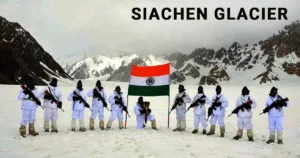Skip to content
KASHI TAMIL SANGAMAM 3.0: STRENGTHENING CULTURAL BONDS
PM MODI VISITS MAZARGUES WAR CEMETERY
Guru Ravidas: A Pioneer of the Bhakti Movement
Bhil Tribal Group Conflict
Fort William Renamed as Vijay Durg
Adi Shankaracharya (788–820 CE)
INTERNATIONAL YEAR OF GLACIERS
ANNUAL STATUS OF EDUCATION REPORT (ASER) 2024
ETIKOPPAKA BOMMALU: A HERITAGE CRAFT
Storm Eowyn: A Devastating Bomb Cyclone
CENTRE DRAFTS RULES FOR UNIFORM IST ADOPTION
DECLINING POPULATION OF THE KORAGA TRIBE IN INDIA
TAMIL NADU’S IRON AGE DISCOVERY CHALLENGES GLOBAL METALLURGICAL HISTORY
Ratnagiri Excavations in Odisha
NATIONAL TRIBAL HEALTH CONCLAVE 2025





